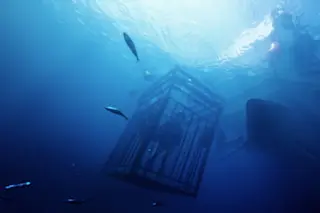This is a guest post by Jake Buehler, who just so happens to be an AAUS certified scientific diver as well as a science writer based in the Seattle area. He blogs over at Sh*t You Didn’t Know About Biology, which is full of his “unrepentantly celebratory insights into life on Earth’s under-appreciated, under-acknowledged, and utterly amazing stories.”
Summer is finally here in the Northern Hemisphere. The days are long, the weather is warm, and the water is inviting. It’s also time for our annual lesson from popular culture that this refreshing invitation is a lie, and that the only thing the sea offers us is electric, blinding terror. Yes, summer inevitably means the advent of a new crop of shark-based survival horror flicks.
This summer, much like the last with “The Shallows”, movie-going audiences will be treated to another shark-centric screamfest: “47 Meters Down.” The British-American film — starring ...














